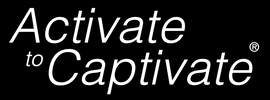|
During a presentation, people share a substantial amount of information. Even though the audience is listening, sometimes a message might get missed. You don’t want people feeling that they need to make an effort in order to keep up. That’s why it’s important to be intentional about pausing during certain moments in a presentation.
1. In the introduction In the introduction, you need to give people a moment to get used to your voice, presence, and presentation style. If you share your ideas too quickly at the start, the audience has to work to keep up with you. Then, if they feel like they need to put in effort at the start (before the information gets complicated) people will just tune out. That’s why you want to pause between your ideas at the beginning, so that your audience has a moment to connect with you and your material. 2. Before you share important information People need a moment to process the last idea they heard. Therefore, if you are sharing important information, be sure to pause right before you share it. Otherwise, even if your message is clear, your audience might not hear it because they are still digesting the last thought. 3. When you share your contribution to a project Background information can easily get confused with new information. That’s especially true if someone is not familiar with the topic you are presenting. However, you want your effort to be acknowledged and stand out. Therefore, I recommend pausing before you share your contribution to a project to make sure it’s recognized. 4. Between slides Every time you click to a new slide, the audience needs a moment to process a new visual. If you talk over your slides, then the audience feels like they need to catch up. That’s why I recommend pausing every time you click to a new slide. It gives the audience a chance to process the new image before they refocus on your speech. 5. Before your last sentence A lot of presenters rush through the end of their presentation. When that happens, the audience doesn’t have time to digest the last thought before everything ends. Therefore, before your last sentence, be sure to take a moment and breathe before you share your last thought. Not only does this help the presentation feel more polished, but it also allows your conclusion to land much more effectively. Pauses are powerful. That’s why I recommend pausing during key moments of your talk. This way, you help your audience relax, process information, and enjoy listening to your presentation. Author: Bri McWhorter Some people have a difficult time sharing their achievements. While being humble is important, there are certain situations where you need to be able to talk about your success, like in a job interview or when you’re up for a promotion. Because if you can’t talk about what you’ve achieved, then it puts the pressure on other people to figure it out. That’s a lot to ask of someone else, especially if they don’t know you well. It’s also hard if a supervisor needs to advocate for you, if you can’t advocate for yourself. That’s why I’ve come up with a few phrases to help people share their accomplishments in an authentic and genuine way.
1. Looking back at myself five years ago, I’m proud to say that I’ve been able to… Thinking about how far you’ve come in your career is a great way to talk about your accomplishments. It’s a nice way to give yourself some perspective so that you can articulate your journey and highlight how much you’ve achieved. 2. I’m grateful that I had the opportunity to contribute to __________ project. Coming from a place of gratitude is useful in most situations. Especially since pompous people rarely bring up how thankful they are. Try using this phrase to help you bring up an achievement in an organic way. 3. When I look back on my career, some of the moments that stand out are…Accomplishments aren’t always attached to a particular project. They can be relationships that you’ve formed, people that you mentored, or even times you’ve invested in yourself — like going back to school to learn a new technique. Reflecting on your journey allows you to highlight experiences that have made an impact. Try using these phrases if you have a harder time bringing up your accomplishments. Using these responses can help other people understand your strengths, your career milestones, and give others a picture of what you might be able to achieve in a new role. Author: Bri McWhorter We are used to instant gratification. We click a button and an article appears, we ask our phone a question and immediately get a response, and we can order an item and expect it to arrive the next day. We don’t live in a world where we patiently wait. Therefore, it’s difficult in presentations when people use phrases that tell an audience what they won’t be getting right now.
For example, people will use phrases such as: I’ll go over that more later… I won’t go into the technical details right now… We don’t have a lot of time so I won’t go over the specifics… I’ll explain that more in a few slides… I’ll describe that in a bit… These phrases are meant to help alleviate questions about more details, but what they really do is distract your audience from what you’re currently explaining. They start to think about what you aren’t sharing right now and it ends up disrupting the narrative. The audience won’t know that you aren’t sharing all the details unless you tell them. So if an audience is listening to you — right now — you want to provide them with the information at that exact moment. If you aren’t going to talk about something for a while, just wait until you get to the point to bring it up. Don’t alert the audience to what they aren’t getting. Instead, just share the information you want and then you can go into more details when you get to that section. This way, your narrative keeps flowing and people can follow your message as you reveal it. Author: Bri McWhorter There are many types of people in a group. Some people are more talkative or extroverted and some are quieter or more introverted. In these situations, it’s easy for the talkative people to dominate the conversation. However, even though quieter people aren’t pulling as much focus, they are still paying attention. Yet, it can often be tough for introverts to establish themselves in a group when they aren’t sharing their voice as much.
That’s why I’ve put together a few phrases that quieter folks can use to remind people that even though they aren’t as talkative, they are still actively engaged in the conversation. Phrases to use: “I’ve been listening to everyone’s initial thoughts about this and I believe…” “What you said made me think about __________. So I’ve been strategizing the best way to approach this…” “When you brought up _______ a little while ago, I started brainstorming about options…” What all of these phrases have in common is that they start by letting people know what’s happening while you’re not speaking. They’re reminding people that even though you are not talking, you are still playing an active role. That reminder is important because many people get silent when they are tuning out. Therefore, teammates might mistakenly assume that if you’re quiet, you’re not actively involved. These phrases stop that false premise and correct the narrative. Then, during future meetings, people won’t assume you have checked out if you’re quiet. Instead, they’ll know that you’re analyzing the situation, and will be more likely to check in with you. Letting people know what’s happening behind the scenes is a great way to stop incorrect assumptions and take control again. That way, even when you aren’t talking out loud, people know that you are still actively part of the conversation. Author: Bri McWhorter Every presentation is a conversation. Even though the audience isn’t speaking, they are still responding to the speaker’s content. There is a back-and-forth between the two parties. However, the more a talk sounds like a “presentation”, the easier it becomes for the audience to tune out. There is a subconscious distancing that can occur which makes it more difficult for the speaker to effectively communicate their message. That’s why I advise avoiding sentences that bring attention to the presentation such as:
1. In this presentation I’ll be talking about… You wouldn’t start talking to a colleague by opening with, “In this conversation I’ll be sharing…” so I wouldn’t open a talk by saying, “In this presentation I’ll be talking about…”. Instead, just share the information without that formal set up. Think of how you’d start talking about this topic in a conversation and open that way instead. 2. I’ll go into that more in a few slides… When people use this phrase, it minimizes the importance of the slide you’re actively sharing. The audience starts to think about what slides will be shown in the future, when that information will come up, and what that info will be. The audience’s attention jumps into the future and they might miss the details you’re currently talking about. If you share the information as you get to it, the audience is always paying attention to what is currently in front of them. 3. This slide shows you… In conversations, images are used to reinforce ideas. They are helpful because pictures add context and specificity to a story. However, you wouldn’t share a photo and say, “This photo shows you…”. Instead, you’d share a bit of background and then show the image to add in more depth to your point. By eliminating that phrase, the slide becomes helpful for adding in details instead of something you are having to explain to the audience. Great speakers want their audience to feel that their participation is necessary and appreciated. Therefore, if you wouldn’t use the phrase in a conversation, I wouldn’t use it in a presentation either. This way, your speech is approachable and your audience can feel more actively involved and connected to your content. Author: Bri McWhorter One of the best parts of conferences is how people in an audience can ask experts questions. It’s an amazing opportunity because you get to interact with someone you might never talk to outside of this event. Because of this rare moment, some people get nervous or anxious as they wait to share their question. It can be a lot of pressure to stand up in front of a large group of strangers and directly address an expert in your field. I know many people who blank out when they’re called on or who get out of breath after sharing a few sentences.
That’s why I wanted to share a few techniques that can help you feel more comfortable sharing your voice and asking questions: Tip One: Breathe When you’re “holding” a question in your head people feel they have to “pause” and they end up holding their breath as they wait for their turn. Then they go from shallow breathing to feeling vulnerable as they share an idea. This can cause your anxiety to spike. If you’re in line or waiting for the microphone, keep breathing and engaging in the discussion as the speaker addresses other people’s questions. If you’re worried about forgetting what you want to ask, write it down. That way you can engage in the dialogue and be comfortable when it’s your turn. Tip Two: Practice the transition from your name to the question Depending on the event, some people want to introduce themselves before asking a question. Once someone’s shared their name it can be hard to smoothly transition to the question. That’s often when people blank out. They don’t know what comes next. So if you’re going to share your name, think of the next phrase you’ll say so you can go from the introduction to confidently sharing your comment. Tip Three: Begin with the comment that sparked the question Many people worry about how to start a question. They know the core of it, but the exact phrase to begin with can be daunting. That’s when I recommend starting with what comment sparked your question. For example, “As you shared this data, I got curious about…” Then your question has a direct link to the presentation or panel discussion and feels organic to bring up. Being able to ask experts questions is a wonderful opportunity that few people have. That’s why you want to feel comfortable taking advantage of these events so you can share your ideas and get feedback. If you get nervous, practice these tips so you can feel more confident at your next event. Author: Bri McWhorter  Interviewers ask all types of questions. While each interview is different, many people worry about how to answer one question in particular: What’s your greatest weakness? This is a difficult question for many people to answer. Some people believe that your weakness should also be a strength. For example, when someone says their greatest strength is “being a perfectionist” they also say that sometimes it goes too far and then “being a perfectionist” is also a weakness. I personally don’t believe in that method. When someone asks about your weakness, this is an opportunity to show that you can reflect on your own abilities and identify skills you can continue to improve. For example, I tell my students in my Public Speaking program that they can reference my training in an interview. For example they could say: I am not a natural public speaker, but I know I’ll need to present my work to my colleagues effectively. That’s why I enrolled in a public speaking class so I could hone my skills and get more comfortable in front of an audience. Or, if you aren’t great at time management you could say: In my former job, I realized I could get distracted by details on a project. So now, at the start of every week I write out a list of things I need to accomplish by Friday morning. I’ve found that I can be far more productive when I have a deadline in mind while still budgeting some time for unexpected events. Or, if the job you’re interviewing for requires you to know how to use a program you didn’t use in your former position, you could say: I know that using Wordpress is a key part of this job, so I’ve been building some websites for friends in order to practice coding for different clients. While I didn’t use it in my former job, I’ve enjoyed getting familiar with the program and am excited about using it more. So next time someone asks you about a weakness, don’t worry. Instead, share something you’re aware you could improve, and talk about how you’re being proactive about it. Author: Bri McWhorter Back to back virtual meetings can be draining, so it makes sense to allow colleagues to keep their cameras off during certain events. Plus, everyone has a lot going on right now and it helps to give people the option of participating without worrying about kids running around in the background or WiFi bandwidth issues.
However, as a speaker it can be very difficult to bring the same energy and enthusiasm to a presentation when you don’t have anyone to talk to or interact with. It’s disconcerting to “check-in” with your audience and only see black boxes staring back at you. Thankfully, there is one situation we are all comfortable with where you never see the person you are talking to, but it doesn’t throw you off — a phone call. When you call someone, in order to visualize that person effectively, it's good to ask where that person is so you can picture them in that location and then deliver your story. Even though you never see their face, you can still feel energized because you can imagine their reactions in your head. That’s why I recommend deciding two things if you're the only one on camera during a presentation:
Then, pretend you’re on a phone call during your presentation. Imagine the person reacting to your story and notice how your presentation changes. This way, you can keep the energy of your original talk without needing to see people looking back at you. Author: Bri McWhorter One of the biggest anxieties presenters have is how to handle the Q & A session after a talk. With so many variables at play, it’s completely understandable that people worry about preparing for every scenario. That’s why I’ve put together these tips to help you feel confident before your next presentation.
Scenario 1: You’ve never thought about that idea before. Part of what makes presentations so wonderful is that it’s an opportunity for others to hear your ideas and share theirs. You’re not expected to have thought of every single possibility beforehand. That’s why you go to an event, to hear ideas from people with different backgrounds. If someone brings up something new you could say: “That isn’t something I’ve thought about before, but I’ll be sure to give it some consideration now that you’ve brought it to my attention.” People appreciate when you take the time to listen to their ideas, even if you don’t have an immediate answer. Scenario 2: You have no clue what the answer is. If you don’t know what the answer is, instead of worrying — just tell them the truth. You could say, “That’s a great question but not my area of expertise, so I don’t feel I can answer that right now.” It’s important to remember that you’re human and you aren’t expected to have all the answers. As long as you don’t collapse and react negatively, the audience member will appreciate that you listened to their comment. Scenario 3: You should know the answer, but can’t think of it. If someone asks a basic question, and you freeze, let the audience know. For example you could say, “That’s something I should know the answer to, but to be honest, at this moment it isn’t coming to me. I’m sure I’ll think of it right after this is over.” People understand the stress that comes with presenting. Everyone has had a moment where they blank out. Just let people know what’s happening, and then you can move on to the next question. Remember not to self-destruct when answering questions. You are human and you’re not expected to prepare for every possibility. Respond like you would if a friend asked you this question. If something surprises you, remember to breathe, state the facts, and then focus on continuing the conversation. That way, if you don’t know the answer to a question, it won’t matter. You can move on and still make a great impression. Author: Bri McWhorter Experiments don’t always go as planned and people commonly find themselves in situations where results take longer than expected. People often worry about how to present their work during a presentation, or at a conference, if they don’t have any data to show. Since people never know how an experiment will pan out, it’s important to feel confident sharing your project, even if you’re still working on it.
That’s why I’ve provided examples of phrases you can use below. If you have no data yet, you could say: We just started collecting data, and I’m looking forward to seeing the results. We are in the process of analyzing the results and I look forward to sharing our findings with you soon. We are about to run the experiment and I’ll be keeping an eye out to see if our hypothesis is correct. If you have preliminary data you could say: We are in the early stages of gathering data and at this point I’ve been seeing… We just started to get our data back and what’s popped out at me so far is… Since this is preliminary data the overall themes and takeaways may change, but so far I’m seeing… Many projects take longer than expected and it’s fine if you don’t have data or results to share. Just make sure you don’t end your presentation on that note. Instead, I recommend ending with the big picture. That way people leave your presentation thinking about the importance of your work and they can look forward to hearing what you find out next. |
AuthorBri McWhorter is the Founder and CEO of Activate to Captivate. Categories
All
Videos
Archives
June 2024
|
Click to Contact
© 2014-2024 Activate to Captivate, LLC
All Rights Reserved
All Rights Reserved










 RSS Feed
RSS Feed
